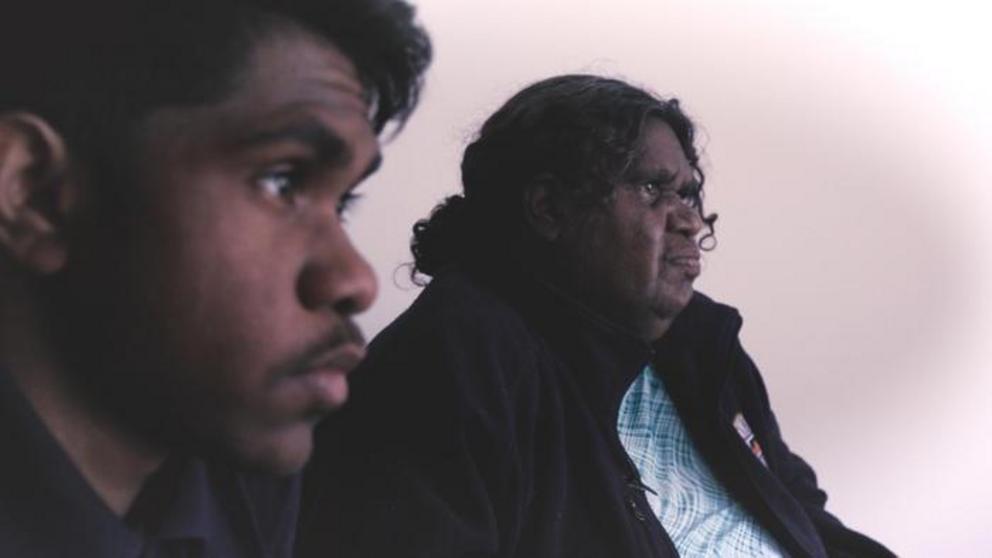Traditional Aboriginal healers push to be part of mainstream healthcare
60,000 year old traditional healing practices could be part of complementary healthcare if the Ngangkari healers are successful in their plight.
For thousands of years, Ngangkari healers have looked after the physical and emotional well-being of their people and communities.
Now they hope to extend their services to all people and be recognised as legitimate medical practitioners, using traditional Aboriginal healing methods to deal directly with the human spirit.
Ngangkari healers are made up of 14 Aboriginal descendants using traditional healing methods from the Anangu Pitjantjatjara Yankunytjatjara lands, or APY lands in South Australia.
Last week, the group travelled to Dubbo in western New South Wales to clinics open to the public and present at the Aboriginal Health Symposium.
As part of NITV’s the Point episode focusing on religion, NITV travelled to Dubbo to meet with the healers and experience their treatment first-hand.
Cindy Hyde, a Ngangkari client, says the practice has been life changing.
“I got one of my regular clients to come along to one appointment and I watched her walk out of the room without her walker," Ms Hyde said.
“She was unable to walk prior to that appointment unaided since she had three strokes previously years ago… So that was a really emotional day and I guess proof that I got to see, plus my own benefits on my personal health journey.”
Spirit and the body
The Ngangkari healers operate on the basis that the human body has three main energy centers that are all connected - the spirit, the head and the guts.
Instead of focusing on an injured foot or physical ailment, the healers tend to the spirit which they believe is causing the pain.
Healer and Pitjantjatjara woman, Debbie Watson, says the spirit is deeply connected with emotional, mental and physical well-being.
“Some people get really sick, like losing family or losing country. That’s why people get sick.”
“Without spirit, only spirit can help. Because you know the spirit – it’s connected to here, (gestures to body) and we can look after our spirit,” Ms Watson said.
Ngangkuri healers offer three main forms of healing, including bush medicine, smoking ceremony and re-aligning the spirit.
During a spirit re-alignment, healers use their hands and physical touch to identify if the spirit is out of place and then pushes it back to where it needs to be.
Ms Watson understands the spirit as the core component of the human body and wants to improve access to her services.
“I wanted to help people across the country,” she said.
“Any people, like Aboriginal or non-Aboriginal. I help everyone because I want to help.”

Mainstream medicine
While the healers already visit major hospitals and rural clinics in Victoria, New South Wales, South Australia and Western Australia, they continue advocating for a larger platform.
CEO of Aṉangu Ngangkaṟi Tjutaku Aboriginal Corporation that represents the healers, Francesca Panzironi, says mainstream medicine should work together with Aboriginal medicine.
“Some people are sick because there are some spiritual interference's in the environment in which they live, the environment in which they work and the disconnection can really prevent people from functioning well,” she said.
“But in our, and I say ‘our’ mainstream scientific, biological model of care, there is no recognition – no place for the spirit."
“This comes from the western mindset which has divided reason and spirit – so science and spirituality," Dr Panzironi explained.
Executive medical director for Western New South Wales Local Health District, Dr Clayton Spencer, has been working with the healers for years and agrees with Dr Panzironi.
He supports an integrated health system and says modern medicine would benefit from a holistic approach to health.
“I see it as a healing system in its own right, its complimenting modern medicine but of course never replacing it.”
"What I like about this form of healing is the spirit's still alive," he said.
“I want to bring healing across the board, across all traditions and I think it starts with Aboriginal healing – but that’s not where it’s going to finish.”
Video can be accessed at source link below

